Smart Sync with Notion and Coda
Published on January 7, 2024
Introduction
In the fast-paced world of data management, synchronizing information seamlessly across platforms is crucial. CodelessAPI provides a powerful solution for Smart Sync between Notion and Coda, allowing you to enhance your data workflow effortlessly. This guide will walk you through the step-by-step process, demonstrating how to set up Smart Sync effectively.
Smart Sync: Bridging Notion and Coda
The Smart Sync module offered by CodelessAPI serves as a versatile tool for simplifying data synchronization between various sources. This guide focuses on the synchronization of data between Notion and Coda, demonstrating the step-by-step process to set up Smart Sync effectively.
Step 1: Sign Up and Create a New API
- Create a CodelessAPI account: If you don't have an account, start by signing up for a free CodelessAPI account. You can register by visiting the sign-up page.
- Generate a new API: After logging in, go to your dashboard and navigate to the "Workflows" page. Click the "Create new Workflow" button. Provide a descriptive name and relevant description for your API. Upon creation, you'll be taken to the API builder interface.
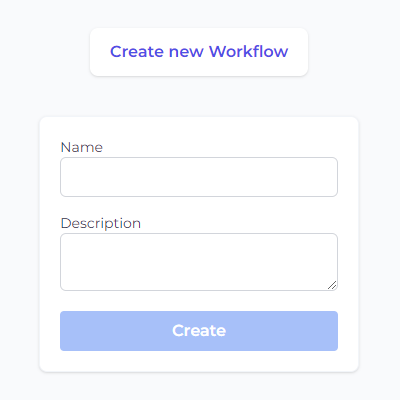
Step 2: Connect Notion
- Select Notion as the data source: In the "Data" section on the left sidebar, expand the "Read" section, and choose "Notion" as the read source for your data copying.
- Add the Notion module to the canvas: Drag and drop the "Notion" module onto the canvas. This module will be the starting point to read data from Notion, automating the data extraction process.
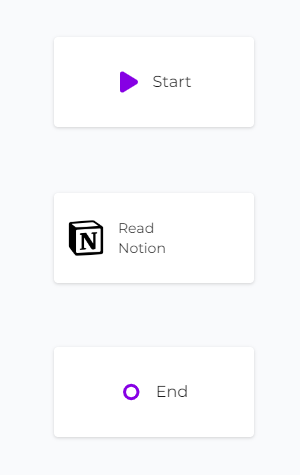
Step 3: Configure Notion
- Authorize CodelessAPI.io with Notion: Click on the Notion module on the canvas and select "Configure" from the options. Follow the instructions to authorize CodelessAPI.io and grant secure access to your Notion data.
- Select Notion database: Once authorized, choose the specific Notion database from which you want to read data. Further, select the columns you'd like to read from, tailoring the data to suit your needs.

Step 4: Connect Coda
- Choose Coda as the other data source: In the "Data" section, expand the "Read" options again and choose "Coda" as the other data source for synchronization.
- Add the Coda module to the canvas: Drag and drop the "Coda" module onto the canvas. This module will be where the synchronized data will be inserted.
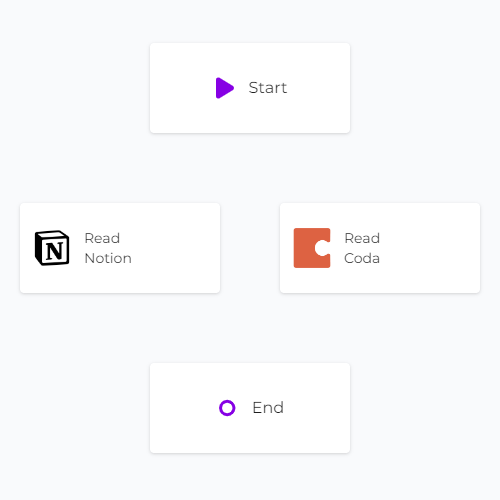
Step 5: Configure Coda Data Source
- Authorize CodelessAPI with Coda: Click on the Coda module within the canvas and select "Add Coda Account." Follow the instructions to authorize CodelessAPI and choose which Coda documents you want to access.
- Select Coda document and tables: After authorization, return to the builder page. Click on the Coda module and choose "Configure." Select the specific Coda account, document, tables, and properties for synchronization.
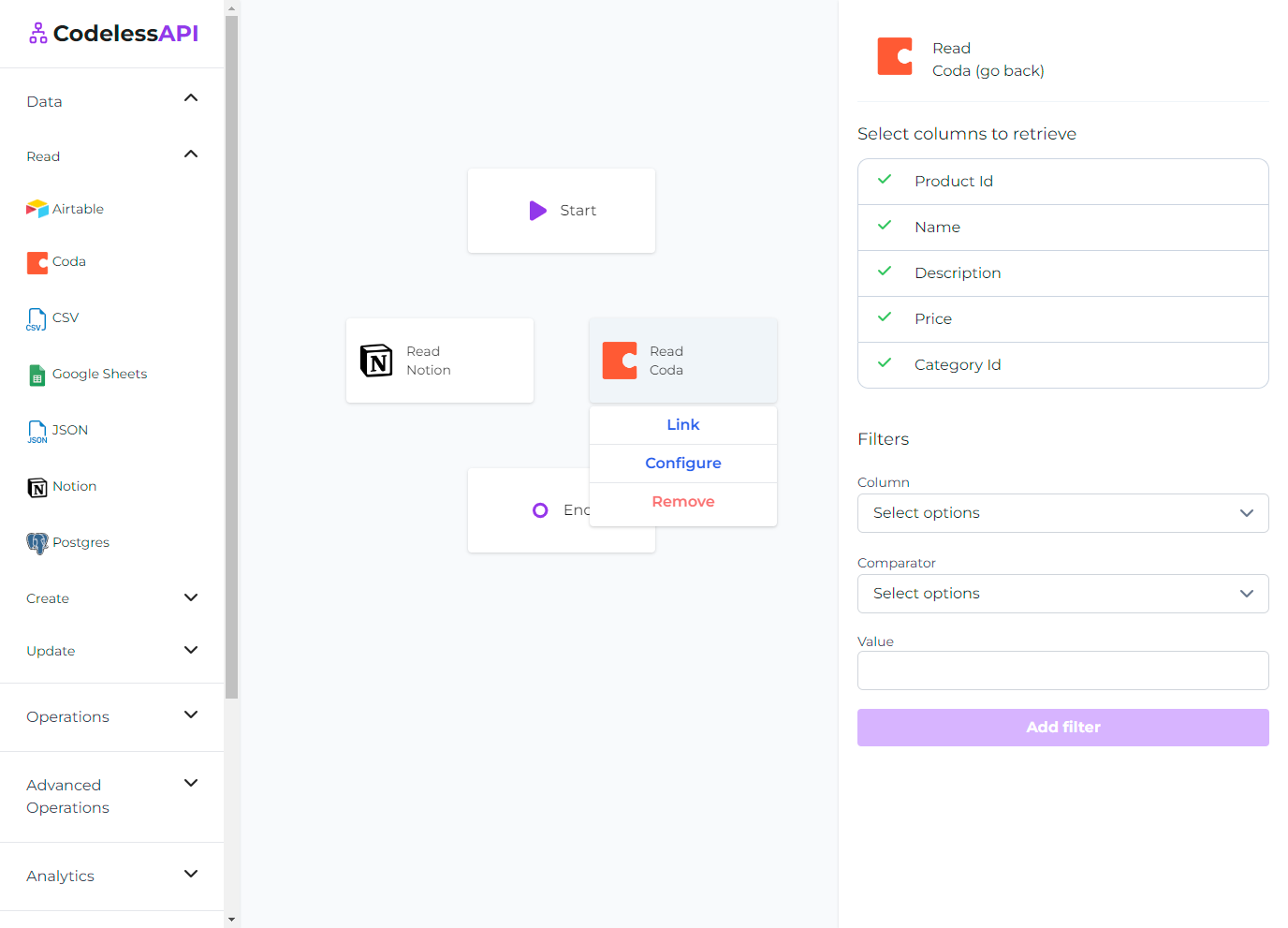
Step 6: Add the Smart Sync Module
- Add Smart Sync Module: In the " Operations" section, drag the "Smart Sync" module onto the canvas. This module acts as the intermediary for syncing data between Notion and Coda.
Step 7: Link the Modules
Create a data flow between Notion, Coda, and the Smart Sync module:
- Link Start to Notion: Connect the "Start" module to the "Notion" module.
- Link Start to Coda: Similarly, connect the "Start" module to the "Coda" module.
- Link Notion to Smart Sync: Connect the "Notion" module to the "Smart Sync" module.
- Link Coda to Smart Sync: Connect the "Coda" module to the "Smart Sync" module.
- Link Smart Sync to End: Connect the "Smart Sync" module to the "End" module.
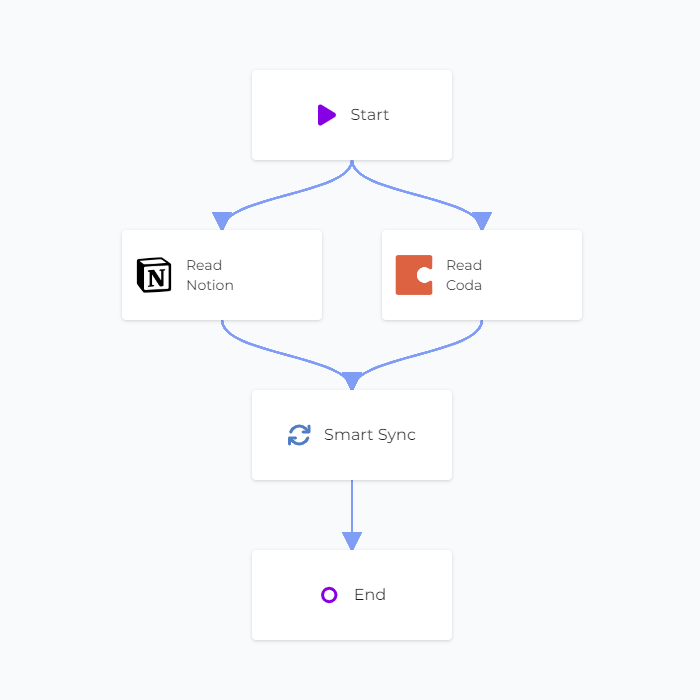
Step 8: Configure the Smart Sync Module
Configure the Smart Sync module to define how data should be synchronized between Notion and Coda:
- Persist toggle: In the configuration panel, on the top, you will see an option to persist changes to the data sources. If this is toggled off, then the workflow will return the output of the smart sync without persisting any of the changes to the data sources. This lets you test out your configuration before making any changes to your sources. Keep this off while testing and ensure you're satisfied with the output before persisting your changes.
- Workflow Output toggle: After the workflow runs your sync, it displays the output of one of the data sources. The second toggle lets you choose which output you'd like to see. If you're syncing data between Coda and Notion, you might decide to add rows from Coda to Notion but not from Notion to Coda. Hence the output for each data source will be different. If you'd like to see the output of a specific workflow when running the Smart Sync, this toggle will let you select that.
- Mapping columns: Now map your columns between Coda and Notion. Here you can tell CodelessAPI which columns in Coda will match to which columns in Notion.
- Row equality: Select the necessary conditions to determine whether or not a row in Coda and Notion is equal.
- Update conditions: Select your update conditions. You can mix and match your update conditions as well, so some columns from Coda will be updated to match the Notion column values, whereas other columns might be updated in Notion to match the Coda column values.
- Create/Delete rows: Here you can specify whether to create or delete rows if a row exists in one data source but not the other.
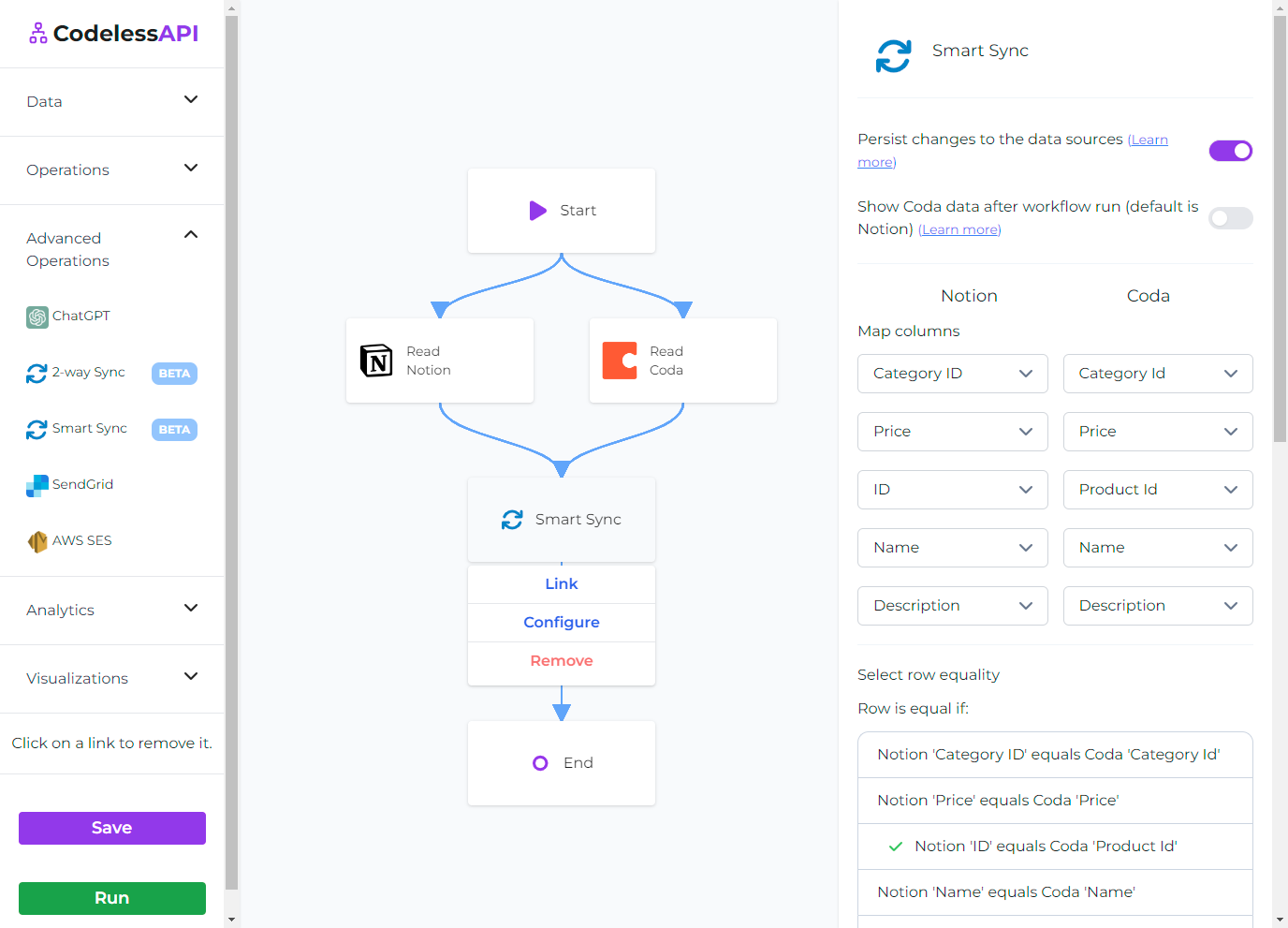
Step 9: Test and Deploy Your API
- Test your API: Initiate a test run of the API using the "Run" button. This helps identify potential issues and validates the API endpoint's functionality.
- Deploy and Use Your API: After configuring the API, access the generated API endpoint to start the synchronization process between Notion and Coda. To use the API, click on the "Start" module and select "Configuration" to obtain the API link. Remember to toggle the "Persist changes to the data sources" to allow changes to be made to your data sources.
Conclusion
CodelessAPI simplifies the process of syncing data between Notion and Coda, providing a seamless and efficient solution for managing your information across platforms. With its user-friendly interface and powerful features, CodelessAPI empowers users to streamline their data synchronization tasks without the need for complex coding.
Whether you're handling extensive databases, collaborative documents, or project-related data, CodelessAPI's Smart Sync module ensures that your information stays up-to-date and synchronized between Notion and Coda. The flexibility of the configuration options allows you to tailor the synchronization process to meet your specific needs.
The intuitive workflow, from connecting data sources to configuring the Smart Sync module, makes it accessible for users with varying levels of technical expertise. CodelessAPI enables you to maintain data consistency, improve collaboration, and enhance overall productivity by automating the synchronization of changes between Notion and Coda.
Start optimizing your data synchronization process today by exploring the robust features of CodelessAPI. For any questions, support, or feedback, our dedicated team is here to assist you. Don't hesitate to reach out to hello@codelessapi.io, and take the first step towards a more efficient and organized data management experience.
 Copy data from Coda to Notion
Copy data from Coda to Notion Copy data from Notion to Coda
Copy data from Notion to Coda Coda Forms
Coda Forms